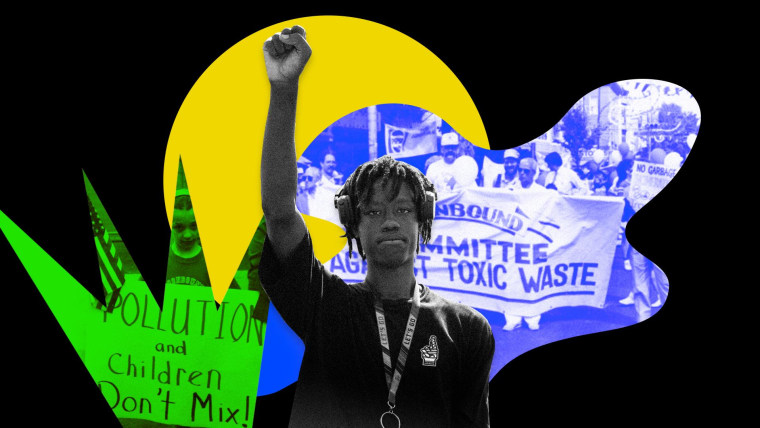In 2010, the 109,000-acre Jefferson Fire spread across the Idaho National Laboratory, a nuclear energy research facility, where it burned over Superfund sites that had been cleaned of radioactive contamination over the previous 17 years. The lab reported that sampling of the area during the fire showed no release of radioactivity.
In 2013, the Patch Springs Fire southwest of Salt Lake City burned within 10 miles of the Tooele Army Depot, a Superfund site with 902 ammunition storage bunkers along with soil and groundwater contaminated with hazardous chemicals, according to Wildfire Today.
In 2018, the Carr Fire burned across 359 square miles of northern California and swept over the Iron Mountain Mine Superfund site, threatening to release corrosive chemicals into the watershed. The narrowly averted disaster spurred the EPA to reexamine the threat posed by wildfires to Superfund sites, especially old mines.
And in October, the Captain Jack Mill Superfund site, a closed mining operation in Boulder County, Colorado, was in the evacuation zone of the Lefthand Canyon and Calwood fires, but was spared when they burned away from the site.
Over the last 20 years, Colorado, for which the GAO lists two fire-threatened Superfund sites, has seen one record wildfire after another, culminating this year in its three largest fires in the state’s history, each burning 140,000 to 200,000 acres.
In California, with 18 threatened sites, fire season is now virtually year-round, with more than 25 million acres of the state’s wildlands facing very high or extreme fire threat, according to a report prepared for Gov. Gavin Newsom. The state saw more than 4 million acres burn this year, the most in its recorded history.
In Montana, with five threatened sites, the temperature has warmed by 2.7 degrees over the past 70 years, substantially more than the nation as a whole, according to the 2017 Montana Climate Assessment. From 1970 to 2015, according to research published by Climate Central, that warming drove an at least tenfold increase in the number of wildfires larger than 1,000 acres in Montana, a greater percentage increase than in any other Western state.
The Kootenai National Forest, which holds Libby’s asbestos-contaminated woods in the area known as OU3, endured its largest wildfire on record — the 25,000-acre Caribou Fire — in 2017. But that fire was some 50 miles away from the Superfund site. The following year OU3 faced a much closer blaze, the Highway 37 Fire, which firefighters held to just 71 acres. That fire burned just outside the boundary of the contaminated forest.
“Climate change is driving increased severe, extensive fire behavior. We’re seeing more and more large, dramatic, destructive fires,” said Don Whittemore, a fire incident commander from Colorado who helped the Forest Service, EPA, state and county leaders put together their plan for managing fires in OU3.
“They’ve had a bunch of large fires on the Kootenai and in northwest Montana in the last couple years,” he said. “I can say it’s a landscape primed for fire. It is set to burn. It’s ideal to burn.”
Libby: A wakeup call
The Highway 37 Fire outside Libby started July 19, 2018, along the highway, where sparks and hot engines often lead to wildfire. Nolan Buckingham’s Asbestos Wildland Fire crew donned their respirators in case the fire crossed the boundary into the contaminated forest and were on the blaze in less than 10 minutes.
Given the extreme health hazards presented by a forest contaminated with highly toxic asbestos, there was no margin for error under extremely difficult conditions.
“That fire really put people out of their comfort level, even if it wasn’t in OU3,” Buckingham said.
As the fire roared uphill, the respirators made it hard for the firefighters to keep up. Luckily, a spot where the steep slope flattened out briefly a quarter mile up that hill gave them the break they needed. “We were able to catch it,” Buckingham said.
For the next several days, aircraft bombed the fire with water constantly as Buckingham and his team set up hoses and sprinklers and, at one point, burned away vegetation before the fire could get to it. Contractors with heavy equipment helped them build a fire line around the blaze. The fire was finally declared contained July 31.
“We learned a lot from the Highway 37 Fire,” Nate Gassmann, the district ranger for the Kootenai National Forest, said, including strategies for containing fires and quickly decontaminating the crew members after their shift.
Still, when the contaminated forest’s fuel buildup and steep topography align with warm dry weather, Whittemore, the fire incident commander, said he worries the area could see far more than 70 acres burning.
“Given the right alignment — 50,000 plus acres in a day,” said Whittemore, who has studied OU3 in detail and led large firefighting teams across the West.
“It’s got the fuels. It’s got the topography. It just needs the weather alignment,” he said. “And if you’re cognizant and aware and thinking about climate change on a global, national, landscape level, it’d be irresponsible not to think that that’s a strong possibility. You have to plan for the worst-case scenario. Because more and more, we’re not only seeing worst-case scenarios, we’re seeing events that exceed worst-case scenarios.”
Iron Mountain: A near disaster
The Carr Fire began some 5 miles west of the Iron Mountain Superfund site in Redding, California, on July 23, 2018. It ultimately overran the site, crippling critical wastewater treatment infrastructure that captures as much as 168 million gallons of acid mine drainage each month. It took more than five weeks to contain.
“There was this feeling of ‘My God. We ought to have better tracking of wildfires at Superfund locations,’” said Stephen Hoffman, a former senior environmental scientist at EPA who continues to consult with the agency on abandoned mine sites. “Before that, there wasn’t a lot of thought about climate change and fire. That has changed.”
Iron Mountain is a mountainous, 4,400-acre site with steep slopes and deep, V-shaped valleys in California’s northern Shasta County where iron, silver, gold, copper, zinc and pyrite were mined from the 1860s until the 1960s.
The former mine leaches water more corrosive than battery acid that also contains large amounts of zinc, copper and cadmium.
Were it to flow untreated into surrounding streams, the toxic water would kill fish, including the endangered winter-run Chinook salmon, and destroy the habitat for area wildlife. The acid and poisons in the tainted water could eventually contaminate Spring Creek Reservoir, which holds mountain runoff before it enters the Sacramento River 8 miles above Redding, a city of 90,000 that depends on the river for its drinking water.
For more of NBC News’ in-depth reporting, download the NBC News app
In anticipation of the fire burning power poles, site managers shut off electricity to the treatment facility that cleans the toxic acid drainage before it enters the watershed. Fire also crawled into the mine along hundreds of feet of polyethylene pipe, a fuse that could have ignited the combustible pyrite — fool’s gold — causing an explosion deep inside the cavern.
After the treatment system shut down, an emergency collection reservoir and a million gallon holding tank captured the tainted water before it could reach nearby streams. Firefighters extinguished the flames creeping along the pipe inside the mine before they ignited the pyrite, preventing an explosive fire that could have released choking clouds of sulphur dioxide.
The million gallon tank collected 395,000 gallons of acid mine water that was neutralized once electricity was restored to the treatment facility a few days after the fire. Plastic pipes that caught fire were replaced by stainless steel pipes.
“Failure would have immediate, long-lived effects on the region’s drinking water supplies and fisheries,” Kate Burger a senior engineering geologist for the Central Valley Water Board, said.
The close call prompted EPA officials to note the danger wildfire posed to the site, in a five-year review completed a month after the fire.
Lily Tavassoli, the Iron Mountain project manager for the EPA during the Carr Fire, defended the agency’s readiness, saying the site had been prepared to handle wildfires on the scale of fires past.
But the Carr Fire was “larger, faster moving and more intense than anything we had experienced before,” she said.
Source: | This article originally belongs to Nbcnews.com











